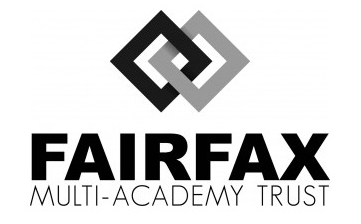
A recent Guardian article on a study by Dr Marlynne Grant on the efficacy of the government approved systematic synthetic phonics programme claimed the overwhelmingly positive results a ‘vindication of the widespread introduction of synthetic or blended phonics in schools in England since 2010.’ It further adds that despite initial resistance ‘teachers have embraced the method, which is supported by research in the UK and abroad.’
Problems: Apart from the obvious, the fact of synthetic phonics having been mandated at all schools since 2007, the study quoted Longitudinal Studies with Synthetic Phonics from Reception to Year 2 and to Year 6 concerns a very small cohort of 30 children, and is therefore more conversation starter than ‘vindication’ for the method. More, the article uses ‘phonics’ and ‘synthetic phonics’ interchangeably, a confusion that leaves us with the distinct impression that the battle is over the efficacy of phonics in general, rather than that of synthetic phonics. To be clear: simply put, synthetic phonics is a sound-to-word phonics method for teaching children to decode words. As such, it is one among many types of phonics approaches.
Also, as the comment feed on the article quickly establishes, there is real doubt as to the objectivity of its main source. The study’s self-published. It has not been peer reviewed. It is the latest piece of research to come from Synthetic Phonics Ltd, a company on which Grant is director and which holds trademarked rights over Sound Discovery, the specific synthetic phonics programme used in the study. In a wrap-up section entitled Recommendations to the School, Grant fails to make explicit that at least two teaching aids she advises the school purchase are part of Rapid Phonics, another of her packages, a ‘phonics catch up programme’ as published by Pearson. In short, both study and article fail to make proper and fair connection between Grant, the phonics programme and possible commercial interests. Instead, the company’s name makes frequent appearances in the reference section, the beginning of a trail that leads to a distinction – made on the company’s website – between ‘research’ and ‘independent reports’. Longitudinal Studies with Synthetic Phonics belongs to the former, final and tacit admission that it is not nearly as objective study as it pertains to be.
All of which casts a heavy shadow over claims the study might make for the successes of synthetic phonics. However, just as serious is the fact that the article fails to properly place Grant’s findings in the context of a debate that has raged since the 2006 publication of the government commissioned Rose Report. Briefly, Jim Rose’s championing of synthetic phonics at early years as being the best platform for learning to read are challenged not so much on the basis that the teaching of phonics in general is wrong, but rather that he should champion it over all else, and that, within the realm of phonics, he should ignore other approaches, such as word-to-sound or analytic phonics.
Tellingly, in their study Synthetic Phonics and the Teaching of Reading Dominic Wyse and Usha Goswami assert that the empirical data on which Rose based his findings for the efficacy of synthetic phonics is inconclusive, and argue that while evidence does point to the general good of a systematic phonics approach, there is no reason why, and certainly not on the basis of Rose’s findings, analytic phonics ought to be regarded as poor performing cousin to synthetic phonics. More importantly, contrary to the ‘simple view of reading’ as propounded by Rose et al, learning to read English (in particular) is an extraordinarily complex process. It incurs the development of ‘extra neural architecture that is not,’ they say, ‘developed by brains learning to read more consistent alphabetical orthographies.’
Despite this and other findings, the ‘simple view’ has been national policy since 2007. Exclusive, intensive systematic synthetic phonics (ISSP) is the order of the day. The Phonics Screening Test came into being in 2012, whereby children are tested on their decoding of 40 words, 20 actual, 20 nonsense, with 32 being the pass mark. Were teachers and schools doing, as the article intimates, exactly what it says on the ISSP tin, then children really would be spending large sections of their literacy lessons ‘barking,’ to quote Rose, ‘at print’ (rather than, as prefers poet and children’s author Michael Rosen and many a supporter of a more mixed approach to learning how to read, ‘internalising’ written language or ‘reading for meaning.’) Thus, teachers in submission, the test or check in place, the government’s relentless push for ISSP would be finally complete.
On the contrary: the picture on the ground is quite different. According to the very same DOE 2014 research report used by the article as supporting evidence for Grant’s findings, schools and teachers continue to employ a mixed approach to the business of teaching children to read. Thus, while the article concludes that 72% of ‘primary literacy specialists...agreed that the phonics check was useful for identifying children who were struggling’, the research report finds that ‘other strategies’ were used by the majority of schools ‘alongside phonics.’ Plus if a reasonably high percentage of literacy co-ordinators agreed that the findings would inform future planning, only 3 in 10 ‘agreed’ or ‘agreed somewhat’ that the check was useful for teachers, a fact backed by interviewed teachers, most of whom ‘reported that the check would have minimal, if any, impact on the standard of reading and writing in their school in the future.’ Finally, there appears among canvassed teachers no settled definition of what a systematic synthetic phonics programme actually is. There’s plenty more here, but in general the DOE report does little to support the article’s claims for a profession positively in love (‘embrace’) with ISSP.
So, to conclude: On the basis of the above, and notwithstanding the conflicting interests of the author the study quotes so extensively, not much favours the article’s claims for Grant’s Longitudinal Studies with Synthetic Phonics vindicating systematic synthetic phonics as the Holy Grail for the teaching of reading. More, there is plenty to be said of a phonics related article in a serious broadsheet failing to properly address a debate in which the majority of practitioners and unions, together with a large number of academics, would appear to either operate or support an integrated approach to teaching children how to communicate and understand through reading and writing. As the likes of Rosen continue to show, the debate’s very much alive. Time to give it its due – and to do so off the back of research properly reviewed.








